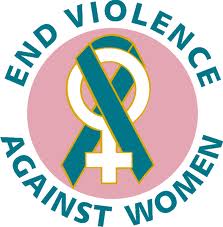 I’m walking a fine line between introducing a note of realism into the discussion of gender persecution and not utterly horrifying readers. I’ve used just the least revealing image here on the premise that anything more revealing would be difficult to bear. But I do urge you to go to Google, hit on images and enter “acid attacks.” We simply have no idea how much devastation these attacks cause people (men are attacked too).
I’m walking a fine line between introducing a note of realism into the discussion of gender persecution and not utterly horrifying readers. I’ve used just the least revealing image here on the premise that anything more revealing would be difficult to bear. But I do urge you to go to Google, hit on images and enter “acid attacks.” We simply have no idea how much devastation these attacks cause people (men are attacked too).
The truth needs to be known. It’s just a question of how much lightworkers can stand knowing. Here is a relatively straightforward article from Wikipedia. You can see that acid attacks take place in many regions of the world, not just one.
The Golden Age of Gaia supports the One Billion Rising event on Feb. 14, 2013.
Acid throwing
From Wikipedia, the free encyclopedia
Acid throwing, also called an acid attack[1] or vitriolage, is a form of violent assault. [2] It is defined as the act of throwing acid onto the body of a person “with the intention of injuring or disfiguring [them] out of jealousy or revenge” .[3] Perpetrators of these attacks throw acid at their victims, usually at their faces, burning them, and damaging skin tissue, often exposing and sometimes dissolving the bones.[4] The long term consequences of these attacks include blindness and permanent scarring of the face and body. [5][6][7]
These attacks are most common in Cambodia, [8] Afghanistan, [9] India, [10] Bangladesh, [5][6] Pakistan [5] and other nearby countries .[7] Globally, at least 1500 people in 20 countries are attacked in this way yearly, 80% of whom are female and somewhere between 40% and 70% under 18 years of age.[7][11]
Attacks in South Asia
In South Asia, acid throwing attacks have been used as a form of revenge for refusal of sexual advances, proposals of marriage and demands for dowry. [5] Scholars Taru Bahl and M.H. Syed say that land disputes are another leading cause. [7]
Afghanistan
In Afghanistan in November 2008, extremists subjected schoolgirls to acid attacks for attending school.[12] Attacks or threats of attacks on women who failed to wear hijab or were otherwise “immodestly dressed” have been reported in Afghanistan. [13]
Bangladesh
In Bangladesh, where such attacks are relatively common, they are mostly a form of domestic violence. [14] The Acid Survivors Foundation counted 91 attacks in Bangladesh in 2011 [15] The chemical agents most commonly used to commit these attacks are hydrochloric acid and sulfuric acid. According to Mridula Bandyopadhyay and Mahmuda Rahman Khan, it is a form of violence primarily targeted at women. They describe it as a relatively recent form of violence, with the earliest record in Bangladesh from 1983. [5] The scholar Afroza Anwary points out that acid violence occurs not only in Bangladesh but also in Pakistan, China, Ethiopia and has occurred historically in Europe. [16]
Cambodia
In Cambodia, it was reported that these attacks were mostly carried out by wives against their husbands’ lovers. [8]
Gaza
In 2006 a group in Gaza calling itself “Just Swords of Islam” claimed to have thrown acid at a young woman who was dressed “immodestly,” and warned other women to wear the hijab.[17]
India
The Thomas Reuters Foundation survey [18] says that India is the fourth most dangerous place in the world for women to live in [19] as women belonging to any class, caste or creed and religion can be victims of this cruel form of violence and disfigurement, a premeditated crime intended to kill or maim her permanently and act as a lesson to put her in her place. In India, acid attacks on women [20] who dared to refuse a man’s proposal of marriage or asked for a divorce [21] are a form of revenge. Acid is cheap and easily available and is the quickest way to destroy a woman’s life. The number of acid attacks have been rising [22] in India and there have been 68 reported acid attacks in the state of Karnataka since 1999 .[23] Most of the female victims suffer more because of police apathy in dealing with cases of harassment as that of a safety issue as they refused to register a police case despite the victim being attacked thrice before meriting police aid after an acid attack.[24]
One such incident would be Sonali Mukherjee‘s case where the perpetrators were granted bail after being sentenced to nine years of Jail. Thereafter, when her family approached High Court, all the legislators, and MPs in search of justice, all she got in return was assurances and “nothing else”. The perpetrators got away scot-free. [25] Without media attention, an acid attack victim languishes in pain and poverty, [26] their families often unable to bear the medical expenses.
Indian acid attack survivor Shirin Juwaley founded Palash Foundation [27] to help other survivors with “psycho-social rehabilitation”. She also spearheads research into social norms of beauty, speaks publicly, and blogs regularly at Do I Look ‘Normal’?. [28] In 2011, the principal of an Indian college refused to have Juwaley speak at her school for fear that Juwaley’s story of being attacked by her husband would make students “become scared of marriage”. [29]
Tom O’Neill of National Geographic reported that acid throwing is also used to enforce the caste system in modern India. [30]
Pakistan
According to New York Times reporter Nicholas D. Kristof, acid attacks are at an all time high in Pakistan and increasing every year. The Pakistani attacks he describes are typically the work of husbands against their wives who have “dishonored them“. [31]
According to another New York Times article, in 2011 there have been counted 150 acid attacks, after 65 in 2010 .[32]


